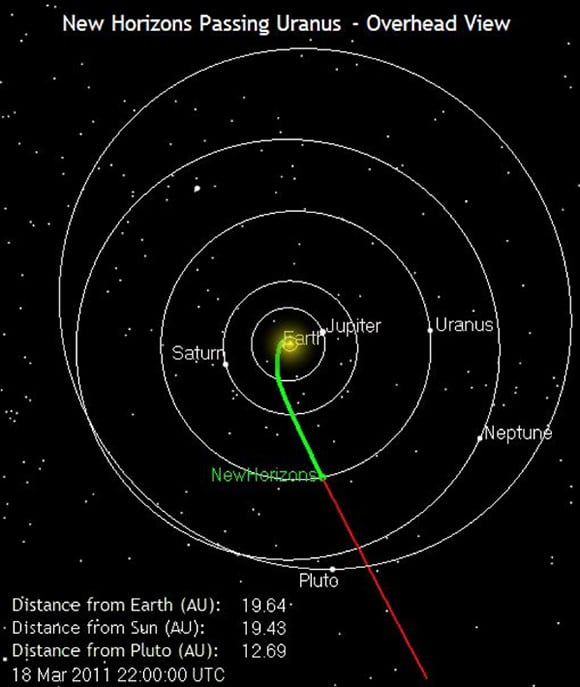Even though New Horizons is the speediest spacecraft ever to travel through our solar system, it still has a long way to go on its voyage to Pluto and the Kuiper Belt. However, New Horizons hit an interplanetary milepost yesterday, June 8, by crossing the orbit of Saturn. At 1.5 billion kilometers or 935 million miles (10.06 astronomical units) distant, that's a mission's worth of space for most spacecraft. But for New Horizons, it's just another interplanetary point on its voyage to the outer reaches of our solar system. As a testament to New Horizons' speed, the spacecraft set a record for the fastest transit to Saturn by any spacecraft, making the trip in two years and four months. Voyager 1, the previous record holder, made the journey in approximately three years and two months.
Still aiming for its arrival at the Pluto/Charon system in July of 2015, New Horizons' mission managers tell us the spacecraft is healthy, and in electronic hibernation. After a productive two-week series of system checks, maintenance activities, and software and command uploads, New Horizons is humming through the outer solar system at 65,740 kilometers per hour (40,850 mph). The team expects to keep the spacecraft in hibernation until Sept. 2.
Although the first 13 months of the mission kept the New Horizons team pretty busy, through its encounter with and gravity assist from Jupiter in February 2007, the next few years will probably be fairly quiet for the mission's scientists and engineers.
In a previous interview, Alan Stern, New Horizons' Principle Investigator told Universe Today, "The middle years will be long and probably, and hopefully, pretty boring. But it will include yearly spacecraft and instrument checkouts, trajectory corrections, instrument calibrations and rehearsals for the main mission." During the last three years of the interplanetary cruise mission, Stern said teams will be writing, testing and uploading the highly detailed command script for the Pluto/Charon encounter. The mission begins in earnest approximately a year before the spacecraft arrives at Pluto, as it begins to photograph the region.
As New Horizons crossed Saturn's orbit yesterday, the ringed planet was nowhere to be seen, as it was more than 2.3 billion kilometers (1.4 billion miles) away from the spacecraft.
And speaking of the Voyager spacecraft (way back in the first paragraph), Voyagers 1 and 2 are at the edge of the Sun’s heliosphere some 100 AU away, and are the only spacecraft operating farther out than New Horizons.
The next big milepost on New Horizons' journey? Crossing the orbit of Uranus, on March 18, 2011.
Original News Source: New Horizons Press Release
 Universe Today
Universe Today
